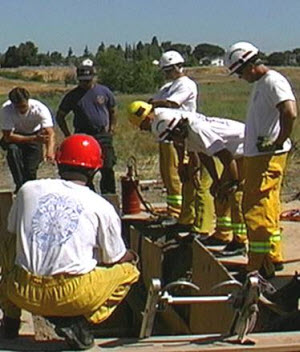
A Texas business that provides water-related services to municipalities is finding itself in hot water with OSHA. The citation stems from a late 2013 fatal trench collapse. Read on to learn why OSHA issued a willful citation in this case.
One worker was killed and another was injured in the incident. According to OSHA, the Cypress, Texas, company had excavated a trench through a concrete road in order to repair a water main. The trench was 16 feet (ft) long, 5 ft wide, and between 8 and 10 ft deep. OSHA says the south wall of the excavation gave way after workers had been inside for 5 to 10 minutes.
The willful violation was issued because the employer failed to provide cave-in protection. A willful categorization means that the violation was “committed with intentional, knowing, or voluntary disregard for the law’s requirements, or with plain indifference to worker safety and health.” The citation carries a proposed fine of $63,000.
OSHA Area Director David Doucet of the Houston North office commented, “Excavation and trenching are among the most hazardous construction operations, but they can be performed in a safe manner by using proper safety equipment, such as trench boxes, consistently.”
Do you know OSHA’s trenching and excavating rules?
According to OSHA, two workers are killed every month in trench collapses. Cave-ins, like the one that occurred in Cypress, Texas, pose the greatest risk and are far more likely to result in fatalities than other excavation-related incidents.
OSHA requires that trenches 5 ft deep or greater have a protective system unless the excavation is made entirely in stable rock. If the trench is less than 5 ft deep, a competent person may determine that a protective system is not required.
Here’s what OSHA expects when it comes to trenching safety:
- Keep heavy equipment away from trench edges.
- Identify other sources that might affect trench stability.
- Keep excavated soil and other materials at least 2 ft from trench edges.
- Know where underground utilities are located before digging.
- Test for atmospheric hazards.
- Inspect trenches at the start of each shift.
- Inspect trenches following a rainstorm.
- Do not work under suspended or raised loads and materials.
- Inspect trenches after any incident that could have changed conditions in the trench.
- Make sure personnel wear high-visibility or other suitable clothing when exposed to vehicular traffic.
The various types of protective systems are:
- Benching—excavating the sides of an excavation to form one or several horizontal levels or steps
- Sloping—cutting back the trench wall at an angle away from the excavation
- Shoring—installing aluminum, hydraulic, or other types of supports
- Shielding—using trench boxes or other supports to prevent cave-ins